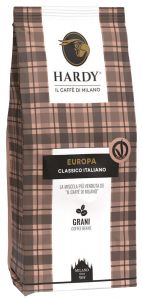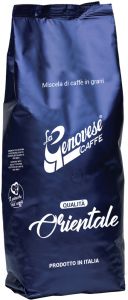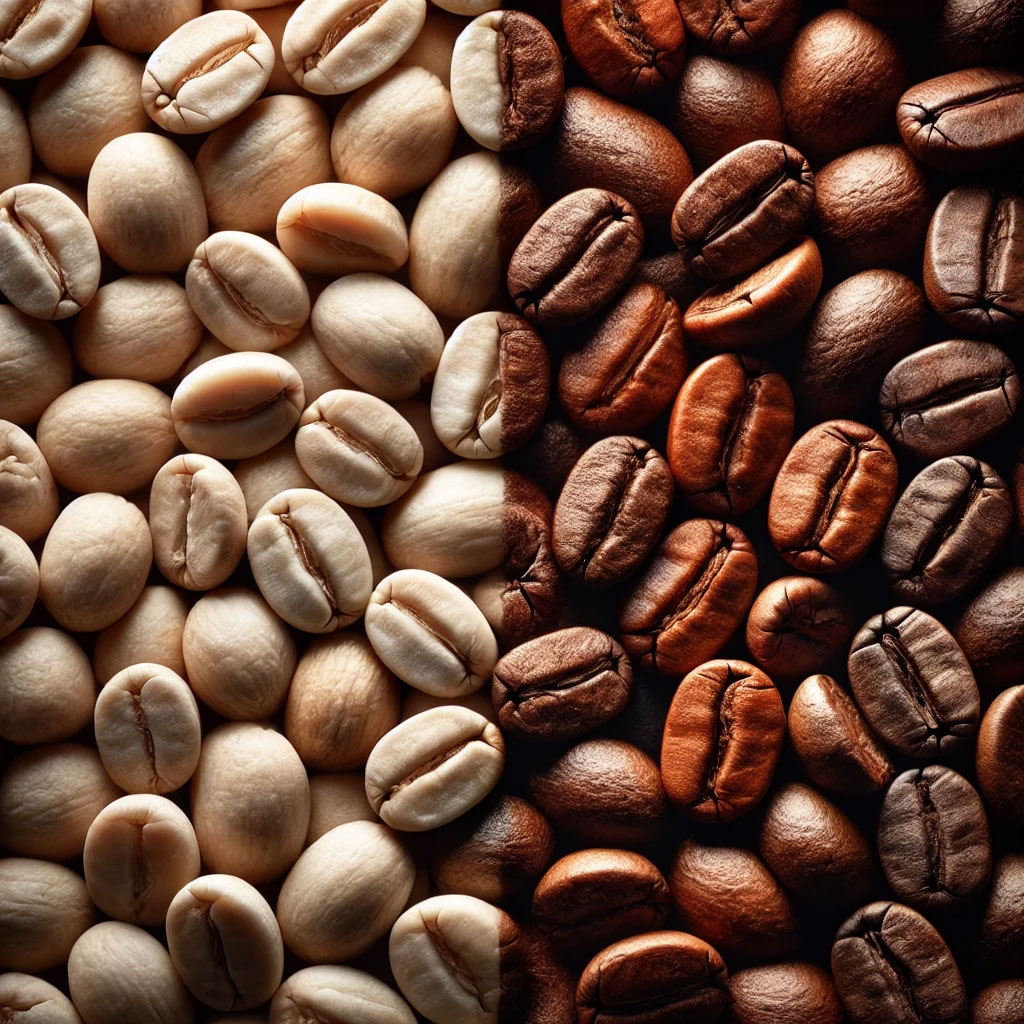
5-7 Workdays Article No. 10223
Aroma(s) : Chocolaty, Nutty
Article No. 10223

5-7 Workdays Article No. 12004
Aroma(s) : Chocolaty, Caramel, Nutty
Article No. 12004

5-7 Workdays Article No. 13970
Aroma(s) : Chocolaty, Malty
Article No. 13970

5-7 Workdays Article No. 10103
Aroma(s) : Chocolaty, Nutty
Article No. 10103

5-7 Workdays Article No. 18550
Aroma(s) : Chocolaty, Malty
Article No. 18550

5-7 Workdays Article No. 10592
Aroma(s) : Chocolaty, Nutty
Article No. 10592

5-7 Workdays Article No. 15210
Aroma(s) : Chocolaty, Malty
Article No. 15210

5-7 Workdays Article No. 10750
Aroma(s) : Chocolaty, Nutty, Fruity
Article No. 10750

5-7 Workdays Article No. 10738
Aroma(s) : Nutty, Fruity
Article No. 10738

5-7 Workdays Article No. 11000
Aroma(s) : Chocolaty, Malty
Article No. 11000

5-7 Workdays Article No. 10740
Aroma(s) : Chocolaty, Almond, Floral, Fruity
Article No. 10740

5-7 Workdays Article No. 10626
Aroma(s) : Caramel, Chocolaty, Nutty
Article No. 10626

5-7 Workdays Article No. 1927
Aroma(s) : Nutty, Malty
Article No. 1927

5-7 Workdays Article No. 10394
Aroma(s) : Nutty, Fruity
Article No. 10394

5-7 Workdays Article No. 10236
Aroma(s) : Chocolaty, Fruity
Article No. 10236

5-7 Workdays Article No. 1929
Aroma(s) : Nutty, Fruity
Article No. 1929

5-7 Workdays Article No. 10509
Aroma(s) : Chocolaty, Nutty
Article No. 10509

5-7 Workdays Article No. 11109
Article No. 11109

5-7 Workdays Article No. 10319
Aroma(s) : Nutty, Malty
Article No. 10319

14-16
Workdays
Extended delivery time
Please note that if you purchase this item, you should expect a longer delivery time for your entire order. We cannot ship other items in your order, that are in stock, ahead of time.
Article No. 11043
Aroma(s) : Chocolaty, Floral, Fruity
Article No. 11043

5-7 Workdays Article No. 1855
Aroma(s) : Chocolaty, Malty
Article No. 1855

5-7 Workdays Article No. 10154
Aroma(s) : Chocolaty, Cloves, Cinnamon, Nutty, Fruity
Article No. 10154

5-7 Workdays Article No. 10898
Aroma(s) : Chocolaty, Floral, Fruity
Article No. 10898

5-7 Workdays Article No. 10591
Aroma(s) : Floral, Fruity
Article No. 10591

5-7 Workdays Article No. 10978
Aroma(s) : Chocolaty, Nutty
Article No. 10978

5-7 Workdays Article No. 11002
Aroma(s) : Chocolaty, Malty
Article No. 11002

5-7 Workdays Article No. 10102
Aroma(s) : Nutty, Fruity
Article No. 10102

5-7 Workdays Article No. 11107
Article No. 11107

5-7 Workdays Article No. 1582
Aroma(s) : Floral, Fruity
Article No. 1582

5-7 Workdays Article No. 11110
Article No. 11110

5-7 Workdays Article No. 10235
Aroma(s) : Chocolaty, Nutty
Article No. 10235

5-7 Workdays Article No. 1928
Aroma(s) : Chocolaty, Floral
Article No. 1928

5-7 Workdays Article No. 10593
Aroma(s) : Nutty, Malty
Article No. 10593

5-7 Workdays Article No. 10313
Aroma(s) : Chocolaty, Fruity
Article No. 10313

5-7 Workdays Article No. 10393
Aroma(s) : Chocolaty, Nutty
Article No. 10393

5-7 Workdays Article No. 10222
Aroma(s) : Chocolaty, Nutty
Article No. 10222
How to Select the Best Coffee Beans: A Complete Guide for Coffee Enthusiasts
- Understanding Different Coffee Bean Types
- Coffee Growing Regions and Their Impact on Taste
- Various Coffee Bean Processing Methods
- The Importance of Coffee Bean Freshness
- Roast Profiles: Finding Your Ideal Choice
- A Guide to Grinding Coffee Beans
- Ethical Considerations When Buying Coffee
- What to Look for in Specialty Coffee
- FAQs: Answering Common Coffee Bean Questions
 Understanding Different Coffee Bean Types
Understanding Different Coffee Bean Types
Arabica vs. Robusta: Key Distinctions
Arabica and Robusta are the two primary coffee bean varieties, each offering distinct characteristics. Arabica beans are widely appreciated for their smooth, complex flavours and lower caffeine content. They usually have a sweet, fruity, or floral aroma, making them a top choice among coffee aficionados. Conversely, Robusta beans are stronger, with a more bitter, earthy flavour profile and higher caffeine levels. They are often used in espresso blends to enhance depth and crema. Understanding these differences helps you choose the right bean for your personal taste.
Specialty vs. Commercial Coffee
Specialty coffee is known for its superior quality, traceability, and strict adherence to production standards. These beans are typically graded on a 100-point scale, with scores above 80 classified as specialty coffee. On the other hand, commercial coffee is mass-produced and often lacks the refined flavours and ethical sourcing practices associated with specialty coffee. Choosing specialty coffee ensures a more flavourful and ethically sound option for your daily brew.
Coffee Growing Regions and Their Impact on Taste
Africa
African coffees, particularly those from Ethiopia and Kenya, are renowned for their vibrant acidity, floral notes, and complex fruit flavours. Ethiopian coffees often feature citrus and berry undertones, while Kenyan beans are known for their bold, wine-like characteristics. The unique growing conditions in these regions contribute to the distinctive flavours that are highly valued by coffee lovers. When exploring African coffees, expect a dynamic and flavourful cup.
South America
South American countries like Brazil and Colombia produce coffee with balanced flavour profiles that are enjoyed worldwide. Brazilian coffees typically offer nutty and chocolatey notes with low acidity, making them ideal for espresso. Colombian beans are celebrated for their smooth, mild flavour with hints of caramel and red fruits. These regions are known for producing consistent and reliable coffee beans, perfect for both beginners and seasoned coffee drinkers.
Asia
Asian coffee-growing regions, such as Sumatra and Java in Indonesia, are famous for producing beans with earthy, spicy, and sometimes smoky flavours. These beans often have a fuller body and lower acidity, appealing to those who enjoy a robust, rich cup of coffee. Asian coffees provide a distinct taste experience, often preferred by those who like a deep and complex flavour profile in their brew.
Various Coffee Bean Processing Methods
Washed Process
The washed process, also known as the wet process, involves removing the cherry’s pulp before the beans are dried. This method produces a cleaner, brighter flavour profile, emphasising the bean's natural acidity and clarity. Washed coffees are often described as having a crisp, clear taste, making them a popular choice for those who prefer a more straightforward cup.
Natural Process
In the natural process, coffee cherries are dried with the fruit still attached, which imparts more sweetness and fruitiness to the beans. This method often results in coffee with a heavier body and more complex flavour profile, adding richness to each cup. Natural processed coffees are ideal for those who enjoy a sweet, fruity taste with a smooth finish.
Honey Process
The honey process is a hybrid method that combines elements of both the washed and natural processes. Some of the fruit pulp remains on the beans during drying, resulting in a balanced flavour with both sweetness and acidity. This method produces a coffee with the best of both worlds, offering a sweet yet clean taste that is increasingly popular among specialty coffee drinkers.
The Importance of Coffee Bean Freshness
Roast Date vs. Expiration Date
When purchasing coffee beans, it’s crucial to check the roast date rather than just the expiration date. Coffee beans are at their peak flavour within 2 to 4 weeks after roasting. An expiration date typically reflects a longer shelf life, during which the beans may lose their optimal freshness and taste. Always opt for the freshest beans to ensure the best flavour in your cup.
How to Store Coffee Beans
Proper storage is essential for maintaining the freshness and flavour of your coffee beans. Keep them in an airtight container in a cool, dark place. Avoid refrigeration or freezing, as moisture can negatively affect the beans' quality. By storing your coffee beans correctly, you can prolong their freshness and enjoy a more consistent and delicious brew.
 Roast Profiles: Finding Your Ideal Choice
Roast Profiles: Finding Your Ideal Choice
Light, Medium, and Dark Roasts
Light roasts retain most of the coffee bean's original flavours, offering bright acidity along with fruity or floral notes. Medium roasts provide a more balanced flavour profile, combining sweetness and body. Dark roasts deliver a bolder, richer taste with pronounced bitterness and lower acidity. Each roast level offers a different experience, allowing you to find the one that best suits your taste preferences.
Impact on Flavor and Aroma
The roast level greatly influences the coffee's flavour and aroma. Light roasts are perfect for those who enjoy subtle and complex flavours, while dark roasts are favored by those who prefer a strong, smoky taste. Exploring different roast levels can help you discover a new favorite way to enjoy your coffee.
A Guide to Grinding Coffee Beans
Choosing the Right Grind Size
The grind size directly affects how your coffee is brewed and its overall flavor. A coarse grind is ideal for methods like French press or cold brew, while a fine grind is necessary for espresso. Adjusting the grind size gives you control over the strength and flavor of your coffee, helping you create the perfect cup every time.
Burr Grinders vs. Blade Grinders
Burr grinders are recommended for their ability to produce consistent, uniform grind sizes, which are essential for optimal coffee extraction. Blade grinders, while more budget-friendly, often result in uneven grinds, leading to inconsistent flavors in your coffee. Investing in a quality burr grinder can elevate your home coffee brewing experience significantly.
Ethical Coffee Buying Considerations
 Fair Trade Coffee
Fair Trade Coffee
Fair Trade certification ensures that coffee farmers are paid fairly for their work, supporting sustainable farming practices and improving living conditions in coffee-growing communities. Buying Fair Trade coffee not only ensures a fair deal for farmers but also promotes ethical consumerism in the coffee industry.
Organic Coffee
Organic coffee is cultivated without the use of synthetic pesticides or fertilizers, offering a healthier option for both consumers and the environment. Look for the organic certification on coffee packaging to ensure you’re buying truly organic products. Choosing organic coffee supports environmentally friendly farming practices that are better for the planet.
Direct Trade
Direct Trade involves buying coffee directly from farmers, bypassing middlemen. This approach often results in higher quality coffee and better prices for the farmers, contributing to a more sustainable and equitable coffee industry. Direct Trade coffee offers a closer connection to the source, ensuring that your purchase makes a positive impact.
Specialty Coffee: What to Look For
Third Wave Coffee Movement
The Third Wave Coffee Movement emphasizes treating coffee as a craft beverage rather than a mere commodity. Look for cafes and roasters that focus on transparency in sourcing, high-quality beans, and precise brewing methods. Embracing this movement means appreciating the artistry and care that goes into every cup of coffee.
Single-Origin vs. Blends
Single-origin coffees are sourced from a specific region, farm, or even a single lot, offering unique flavour profiles that reflect their origin. Blends combine beans from different regions to create a balanced and consistent flavour. Both options offer distinct experiences, with single-origin coffees providing a more focused taste and blends offering complexity and balance.
FAQs: Answering Common Coffee Bean Questions
How do I know if coffee beans are fresh?
Fresh coffee beans should have a strong, pleasant aroma and a shiny, oily surface. If the beans appear dull and lack fragrance, they may be past their prime. Always check the roast date and opt for beans that have been roasted recently for the best flavor.
What’s the best way to store coffee beans?
Store coffee beans in an airtight container in a cool, dark place to maintain their freshness. Avoid storing them in the refrigerator, as temperature fluctuations can introduce moisture, leading to stale coffee. Proper storage is key to preserving the rich flavours of your coffee beans for as long as possible.



 Understanding Different Coffee Bean Types
Understanding Different Coffee Bean Types Roast Profiles: Finding Your Ideal Choice
Roast Profiles: Finding Your Ideal Choice Fair Trade Coffee
Fair Trade Coffee